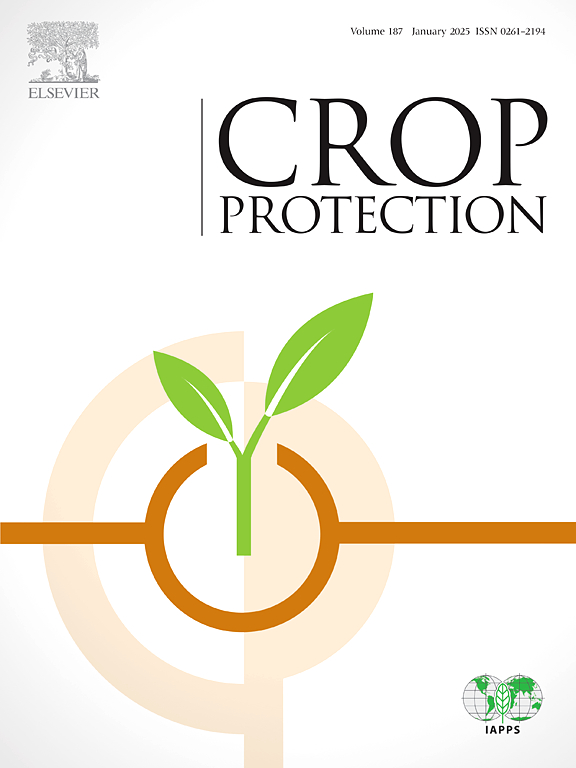Effect of temperature on the development and reproduction of olive psyllid Euphyllura olivina Costa (Hemiptera: Psyllidae)
IF 2.5
2区 农林科学
Q1 AGRONOMY
引用次数: 0
Abstract
Euphyllura olivina Costa (Hemiptera: Psyllidae) threatens olive crops, necessitating an understanding of temperature's impact on its development and reproduction for effective management. To investigate these effects, laboratory-based experiments were conducted under constant temperatures ranging from 15 to 40 °C. The egg incubation period decreased significantly with rising temperatures, from 12.7 days at 15 °C to 3.2 days at 40 °C. The longest lifespans were observed at 25 °C, with females averaging 46.8 days and males 38.6 days. The highest egg-to-adult survival rates were at 20 °C, with 20.0% for females and 17.5% for males. Preadult survival rates exhibited notable variability, with the highest survivorship of 38.0% observed at 20 °C. The maximum average number of eggs produced per female peaked at 242.6 at 25 °C, while daily fecundity was highest at 32 °C, averaging 9.0 eggs per female per day. The population growth parameters showed their most favorable values at 25 and 32 °C, with rm (0.033 and 0.050 d⁻1, respectively) and R₀ (31.53 and 25.3 offspring per female, respectively) being highest at these temperatures. The predicted fecundity of next generation (G2) and the population trend index (I) reached their highest values at 25 °C (1576.9 and 7.9, respectively), indicating optimal growth conditions at this temperature. The temperature thresholds for the complete pre-adult stage were estimated at 5.2 °C for females and 5.4 °C for males, with thermal constants of 769.2°-days (DD) for females and 714.3 DD for males. These findings indicate that the most favorable temperature range for the population growth of this pest falls between 25 and 32 °C.

求助全文
约1分钟内获得全文
求助全文
来源期刊

Crop Protection
农林科学-农艺学
CiteScore
6.10
自引率
3.60%
发文量
200
审稿时长
29 days
期刊介绍:
The Editors of Crop Protection especially welcome papers describing an interdisciplinary approach showing how different control strategies can be integrated into practical pest management programs, covering high and low input agricultural systems worldwide. Crop Protection particularly emphasizes the practical aspects of control in the field and for protected crops, and includes work which may lead in the near future to more effective control. The journal does not duplicate the many existing excellent biological science journals, which deal mainly with the more fundamental aspects of plant pathology, applied zoology and weed science. Crop Protection covers all practical aspects of pest, disease and weed control, including the following topics:
-Abiotic damage-
Agronomic control methods-
Assessment of pest and disease damage-
Molecular methods for the detection and assessment of pests and diseases-
Biological control-
Biorational pesticides-
Control of animal pests of world crops-
Control of diseases of crop plants caused by microorganisms-
Control of weeds and integrated management-
Economic considerations-
Effects of plant growth regulators-
Environmental benefits of reduced pesticide use-
Environmental effects of pesticides-
Epidemiology of pests and diseases in relation to control-
GM Crops, and genetic engineering applications-
Importance and control of postharvest crop losses-
Integrated control-
Interrelationships and compatibility among different control strategies-
Invasive species as they relate to implications for crop protection-
Pesticide application methods-
Pest management-
Phytobiomes for pest and disease control-
Resistance management-
Sampling and monitoring schemes for diseases, nematodes, pests and weeds.
 求助内容:
求助内容: 应助结果提醒方式:
应助结果提醒方式:


